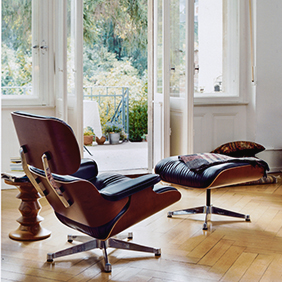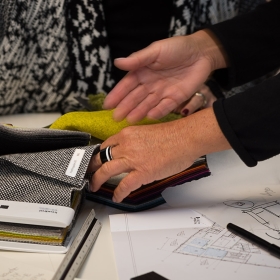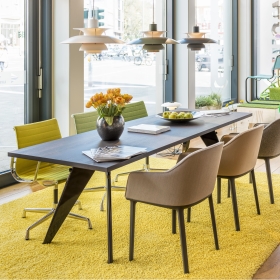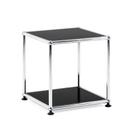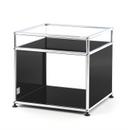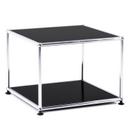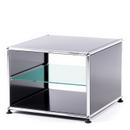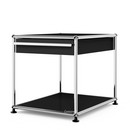USM Haller Side Table 35, Olive Green
by Fritz Haller & Paul Schärer, 1965 — 323,00 €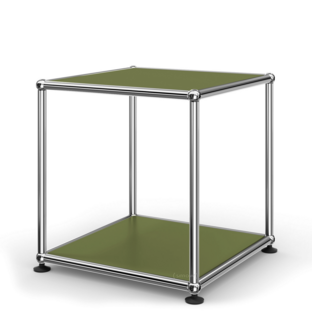
has been added to your wishlist.
Details
| Product type | Side table |
| Dimensions | Overall: H 39 x W 38 x D 38 cm Ball centre to ball centre: H 35+4 x W 35 x D 35 cm Foot ø 3,6 cm |
| Weight | 5,4 kg |
| Material | Panels: Metal, powder coated Structure: Steel, chrome plated Ball: Brass, chrome plated Feet, plastic |
| Care | Chrome plated, powder coated and glass elements should be cleaned with a damp, light cloth and subsequently dried. Stubborn stains can be cleaned with glass cleaner or water mixed with ethanol in a ratio of 10:1 Please click on picture for detailed information (ca. 1,6 MB). 
|
| Awards & museum | Permanent collection MoMA, New York |
| Certificates | Inflammable class 1 (DIN 4102) |
| Sustainability | GREENGUARD - Indoor Air Quality LEED "Green Directive" |
| Warranty | 24 months |
| Product family | USM Haller Side Tables |
| Accessories | Felt Overlay by Parkhaus Berlin or Leather Overlay by Leather On Top. |
| Product datasheet | Please click on picture for detailed information (ca. 1,6 MB). |
| Product presentation |
Design
In 1963 the architect Fritz Haller developed the USM modular furniture system in the context of a contract for the Swiss metal and ironmongery concern USM. What began as an office furniture system intended solely USM soon developed into a global a design classic: the first commercial customer was the Rothschild bank Paris in 1969 and through the course of the 1970s system USM Haller proved itself especially suitable for contemporary work culture and the preference for open, flexible designed rooms. The USM modular furniture system is based on just three elements: metal tubes form a skeletal structure connected by small chrome plated brass balls and which is padded out by shelves and panels made of metal or glass. This system thus allows for highly individual furniture designs that can reconfigured, extended or reduced as required. This characteristic USM adaptability can also be seen in the USM Haller side table 35. The smaller of the two USM side tables the side table 35 is available with inserts made of glass or metal and in a range of colours.
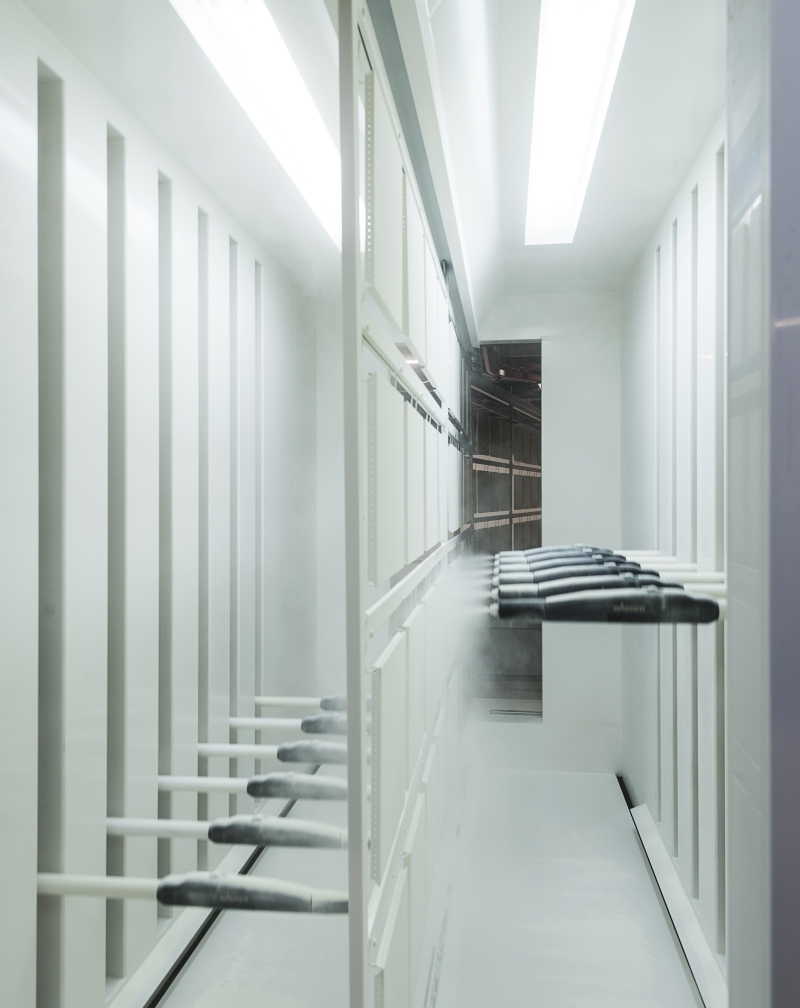
Powder coating metal shelves in USM white
Designer
The designer of the USM furniture system, Fritz Haller, arrived,more or less, randomly at furniture design. Following the completion of his training as a draughtsman Fritz Haller began to study architecture, including spending time in Rotterdam with Willem van Tijen and Berend Bakema, two of the most important representatives of post-war formalism and architects who had a considerable influence on the development of the functionalist architecture of the young Fritz Haller. From this architectural base arose the USM Haller shelving system. The office furniture system was developed Haller after he had completed new buildings for USM commissioned by director Paul Schärer. Initially only intended for the Office Pavilion in Münsingen, Haller's shelving system would go on to revolutionise the world of office furniture. In addition to his design and architecture work, Fritz Haller taught at the Universities in Karlsruhe, Dortmund and Stuttgart and although System USM Haller was to be Fritz Haller's only commercial furniture design project, it was to be one of his popular and successful works and has won him several awards. Fritz Haller died in Switzerland in 2012.
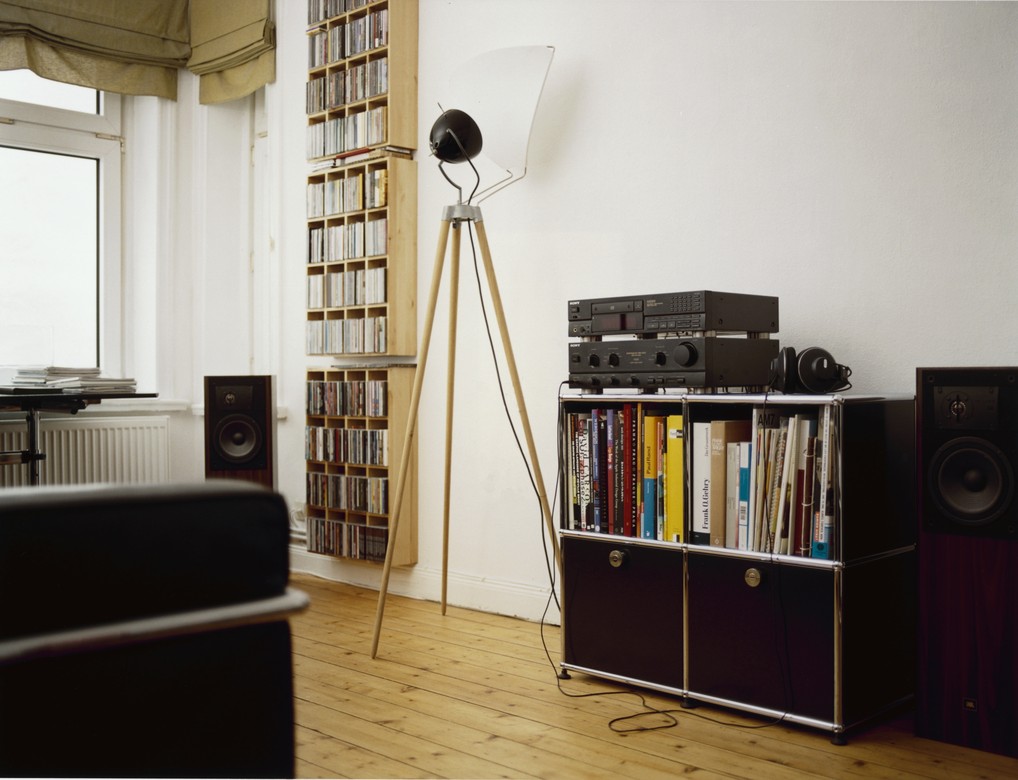
System USM Haller as modern multi-media furniture
Manufacturer
Seventy years after its 1885 establishment as an ironmonger and locksmith business, USM stands as manufacturer of one of the most innovative office furniture systems of the twentieth century. Following a diversification into the production of window shutters in the 1920s and the introduction of sheet metal fabrication in the 1940s, the decisive moment in the company's story came in the early 1960s when director Paul Schärer commissioned the architect Fritz Haller to design new administration and production facilities. And a furniture system for the new office pavilion. Mass-produced since 1969 the USM office furniture has been subject to copyright since 1988 and was added to the permanent collections of the MoMA New York in 2001. In addition to the popular shelving system USM produce a range of furniture items, including various USM Haller tables and side tables.
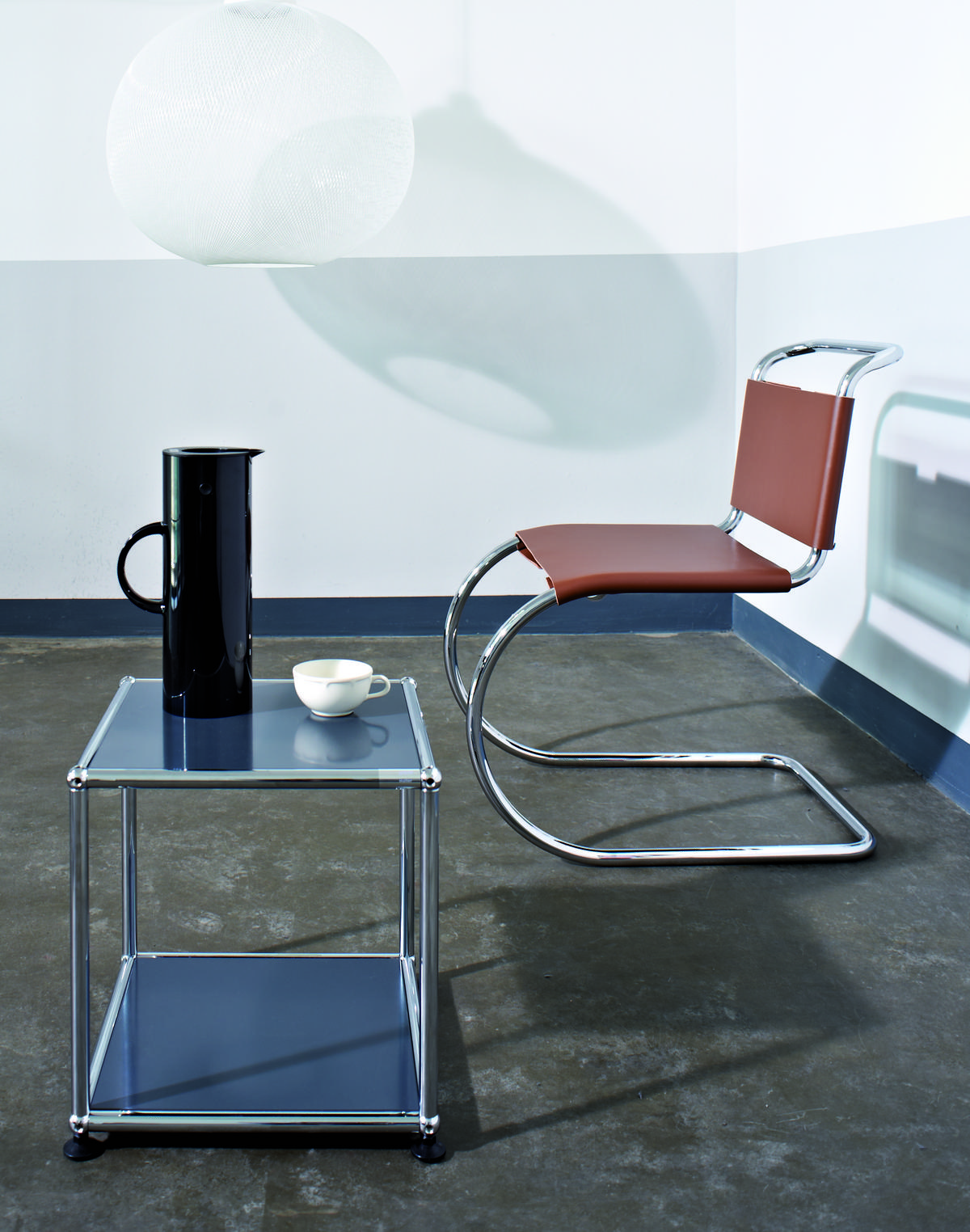
The USM Haller Side Table 35
Production
USM has been based in the Swiss village of Münsingen since 1885, and since the commercial launch of the USM modular furniture system in the late 1960s it is in Münsingen that all components for their furniture system have been produced and powder coated in the 14 USM colours, including pure white, graphite black and ruby red. The individual parts are subsequently either assembled in Münsingen for transport to customers, or shipped disassembled for assembly on site. This focus on a single production site is not only an ecologically prudent step but also guarantees the consistently high quality of USM tables and other furniture. In addition the high quality and versatility of the furniture system guarantees an extremely long product cycle is granted; should your needs change your USM unit can be rebuilt, reconfigured or upgraded.
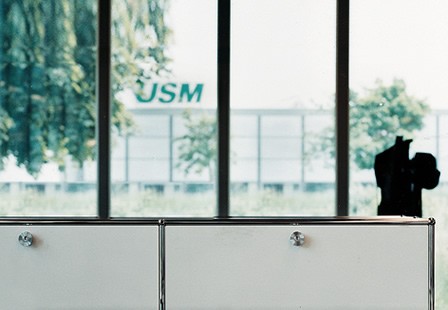
In addition to the USM furniture system Fritz Haller also designed the USM buildings
Historical Context
Not only Haller's buildings but also the USM Haller furniture system are closely linked to the concept of functionalism. The term initially gained an importance after the First World War, for all through the exploits of the Bauhaus school. According to the famous dictum "form follows function" the beauty in architecture and design should result from the functionality of the object and not external ornamentation. Fritz Haller's USM modular furniture is a particularly good example of this, not only because of its pared down aesthetic, but because as furniture system it offers individual solutions for different, specific, situations. In the spirit of functionalism the system presents a strict and minimalist design language that is as contemporary now as it was then. Consequently System USM Haller remains a modern, stylish, functional furniture system for home or office.
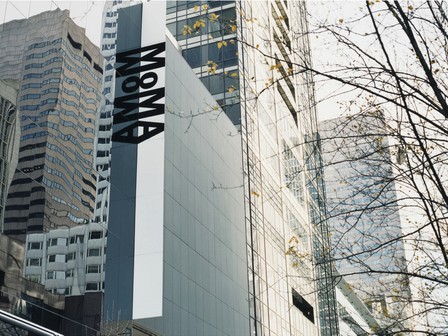
The USM shelving system was admitted to the collection of the Museum of Modern Art in New York in 2001.


